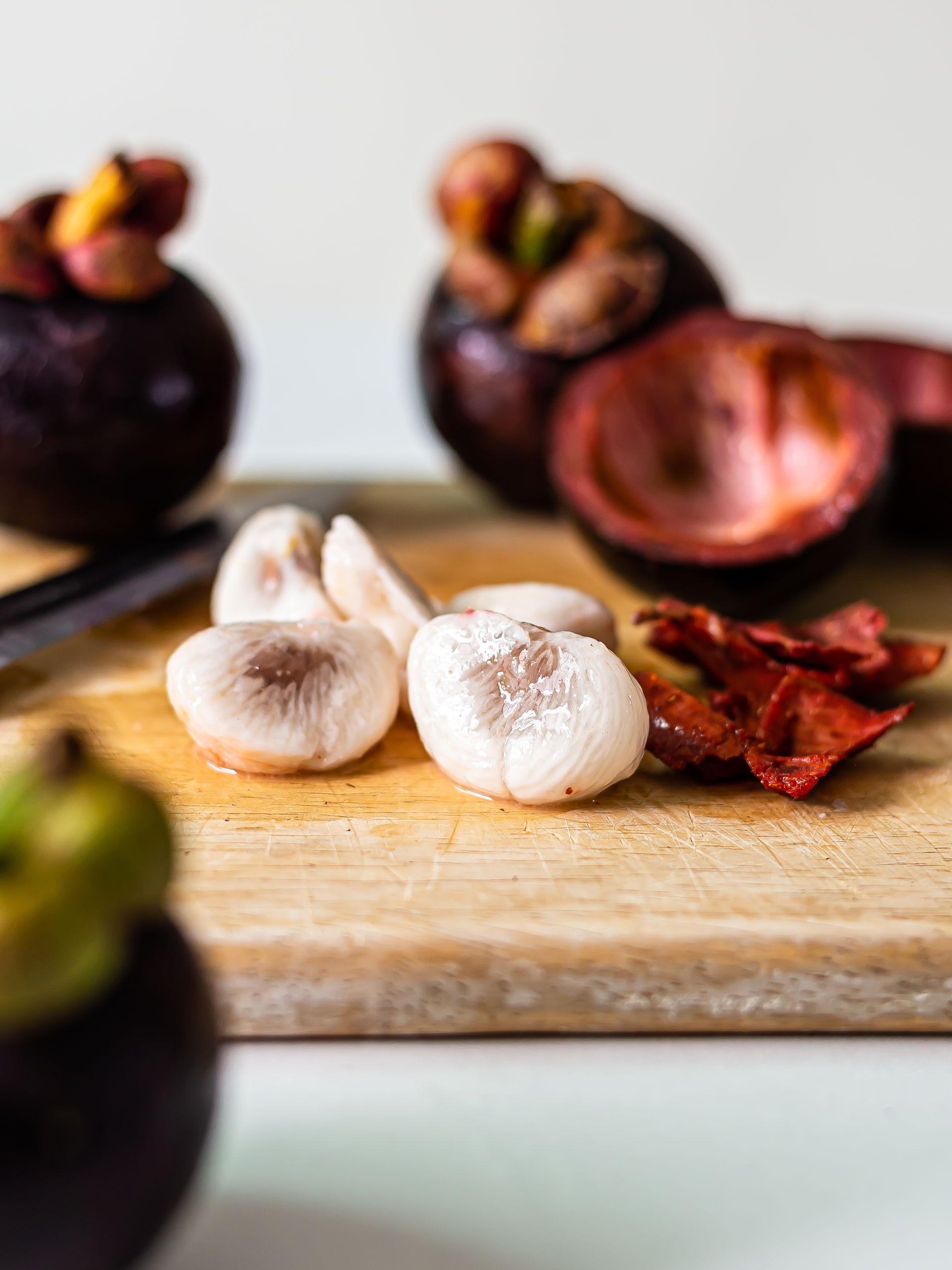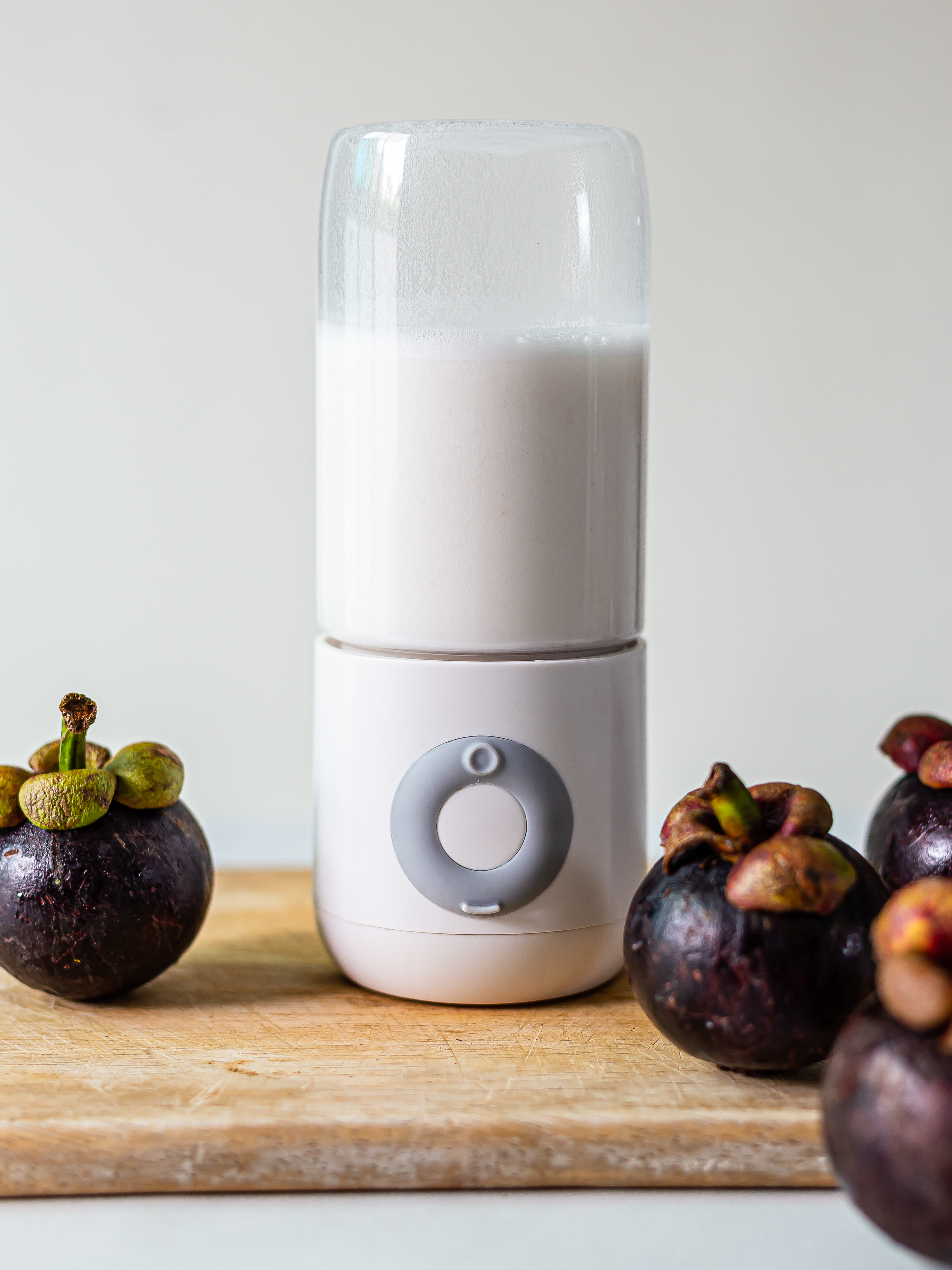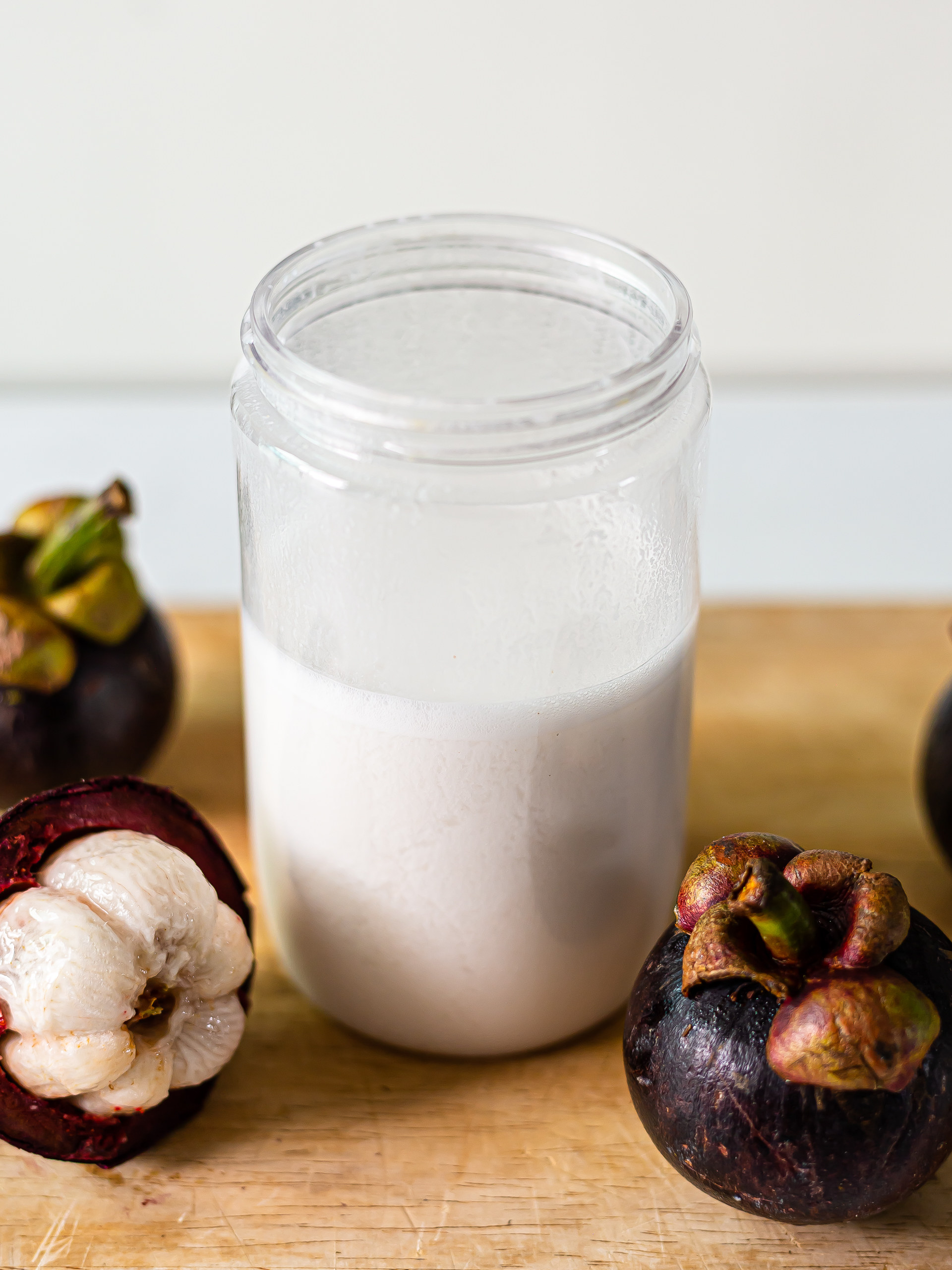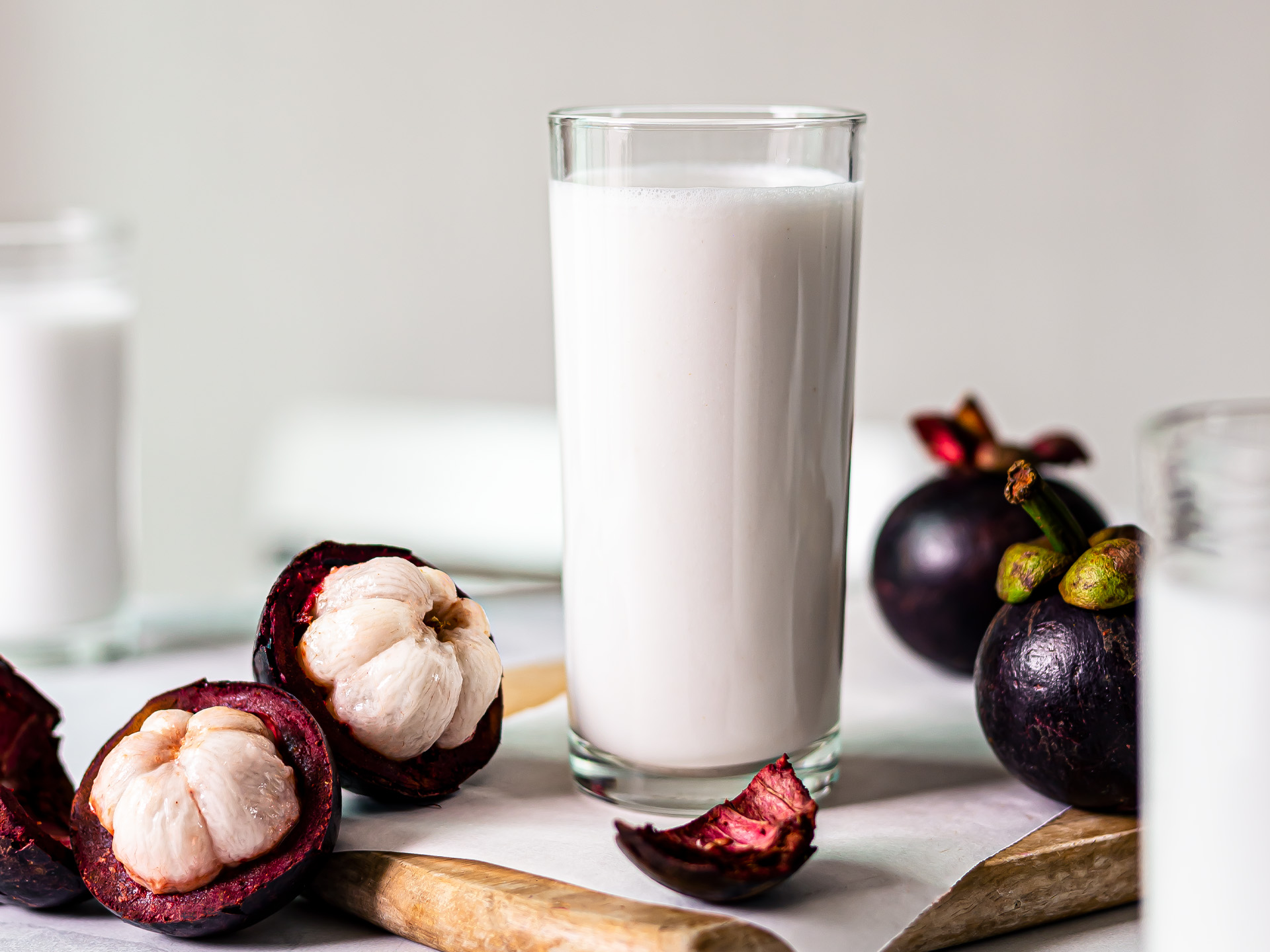Today, we want to show you how to make a delicious exotic smoothie with purple mangosteen, "the queen of all fruits". It's light, sweet, and refreshing — we're sure you'll love it. So let's jump right into it!
Mangosteen is a tropical fruit from Southeast Asia. It's native to Malaysia and other regions around the Indian Ocean, and it's mostly grown in and exported from Thailand.
Also known as the "queen of the fruits" or purple mangosteen, mangosteens have a deep purple, hard rind surrounding a juicy white fruit.
The taste of mangosteen is really unique: a delightful cross between lychee, peach, and strawberry, with a hint of tangy citrus. It's sweet, fresh, and delicate.
The white pulp is juicy and fibrous. It consists of tangerine-like segments, some of which hold a hard seed. The seed looks a bit like an almond, but it's inedible.
Mangosteens are delicious eaten fresh in smoothies and salads. But they're also used to make exotic desserts, ice creams, and even jams!
In this recipe, we paired mangosteens with coconut drink, which is the diluted version of canned coconut milk. You can find it in the plant-based milk section of your supermarket.
We like to make creative fruit combos in our smoothie recipes, but we kept the ingredients list short and sweet this time.
That's because mangosteens' flavour is so delicate it can be easily overpowered by other fruits.
Coconut milk drink instead complement the smoothie with a creamy texture and sweet, nutty notes — without taking anything away from the fruit's light flavour.
But if you'd like to add in other tropical fruits, you can surely do so. Check out the recipe below for tips and inspiration!
Besides being incredibly tasty, mangosteens are also healthy.
They're low in calories and provide fibres, vitamins and minerals, including vitamin C, magnesium, potassium, and manganese. They also contain xanthones, plant compounds with beneficial antioxidant properties.
If it's your first time buying mangosteens, you should know they're harder to find than other, more common exotic fruits.
That's because mangosteens are native to tropical regions, have a short production season, and have been introduced in the West only recently.
Your best bet is a well-stocked Asian food market. And be prepared to pay a little more than what you would expect. Alternatively, you may be able to find mangosteens frozen or canned, and likely cheaper, at specialised markets or supermarkets.
Ok now, time to dust off your trusty blender and prepare this wonderful mangosteen smoothie together!
And if you'd like to try more tropical smoothies, check out this rambutan smoothie, sweet jackfruit smoothie, or guava mango smoothie. They're a real delight!
Ingredients
| Mangosteens | 6 |
| Coconut Drink | 500 mL |
Step 1
Let's start by opening and deseeding the mangosteens.
Score the outer dark-purple shell with a knife without cutting through the fruit and cut a slit.
Insert your finger in the slit and pry the skin off.
You'll have a pulpy white fruit inside: simply pop it out and discard the shell.
Then, separate the mangosteen segments and cut the pulp around the central seed (it has the size and look of a small almond) and discard it.
Not all the segments will have a seed, and some will have such a small seed you don't even need to remove it.

Step 2
Add the prepared mangosteen to a blender, followed by coconut milk drink.
At this point, you can also add other fruits if you like, but watch out as they can easily overpower the delicate flavour of mangosteen.
That's why we used only coconut milk drink.
You can pair mangosteen with other delicate tropical fruits like longans, rambutans, and dragon fruit.
For bolder combinations instead, try bananas, passion fruit, pineapple or papaya.

Step 3
Blitz all together until smooth, and enjoy your delicious tropical mangosteen smoothie!
It's a great companion to these crunchy peanut "drops", healthy bananas flapjacks, or purple ube rice bars.

Tips
It's easier to find mangosteens at your local Asian food market when these fruits are in season in the summer months. Choose deeply-coloured fruits, firm and with their caps still attached for maximum freshness.
